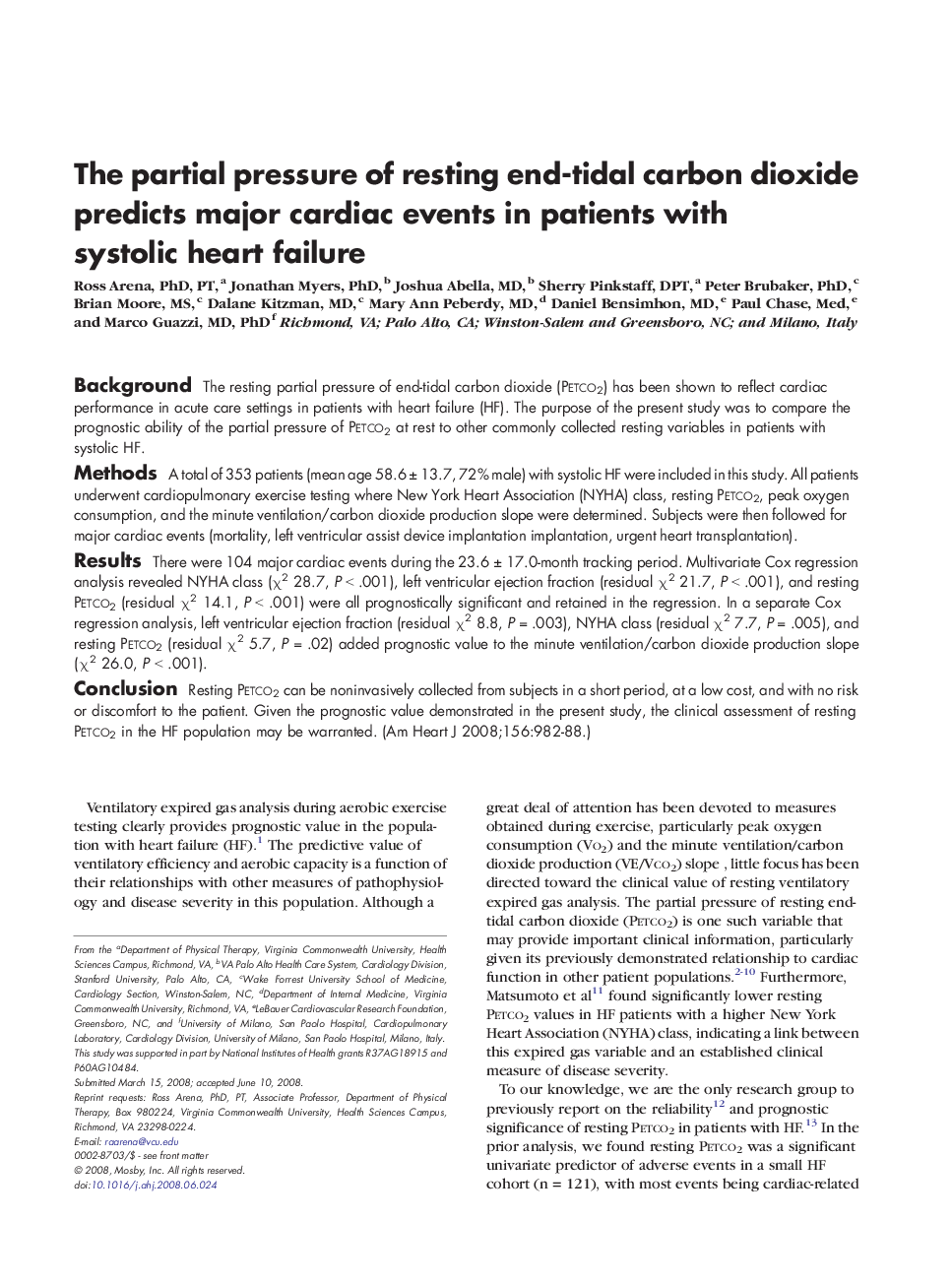| Article ID | Journal | Published Year | Pages | File Type |
|---|---|---|---|---|
| 2850709 | American Heart Journal | 2008 | 7 Pages |
BackgroundThe resting partial pressure of end-tidal carbon dioxide (Petco2) has been shown to reflect cardiac performance in acute care settings in patients with heart failure (HF). The purpose of the present study was to compare the prognostic ability of the partial pressure of Petco2 at rest to other commonly collected resting variables in patients with systolic HF.MethodsA total of 353 patients (mean age 58.6 ± 13.7, 72% male) with systolic HF were included in this study. All patients underwent cardiopulmonary exercise testing where New York Heart Association (NYHA) class, resting Petco2, peak oxygen consumption, and the minute ventilation/carbon dioxide production slope were determined. Subjects were then followed for major cardiac events (mortality, left ventricular assist device implantation implantation, urgent heart transplantation).ResultsThere were 104 major cardiac events during the 23.6 ± 17.0-month tracking period. Multivariate Cox regression analysis revealed NYHA class (χ2 28.7, P < .001), left ventricular ejection fraction (residual χ2 21.7, P < .001), and resting Petco2 (residual χ2 14.1, P < .001) were all prognostically significant and retained in the regression. In a separate Cox regression analysis, left ventricular ejection fraction (residual χ2 8.8, P = .003), NYHA class (residual χ2 7.7, P = .005), and resting Petco2 (residual χ2 5.7, P = .02) added prognostic value to the minute ventilation/carbon dioxide production slope (χ2 26.0, P < .001).ConclusionResting Petco2 can be noninvasively collected from subjects in a short period, at a low cost, and with no risk or discomfort to the patient. Given the prognostic value demonstrated in the present study, the clinical assessment of resting Petco2 in the HF population may be warranted.
